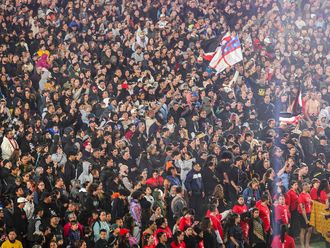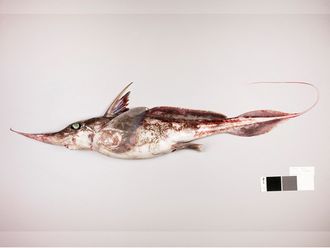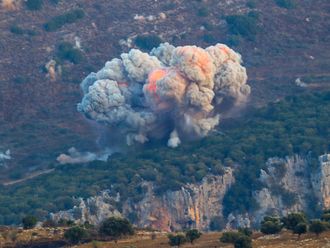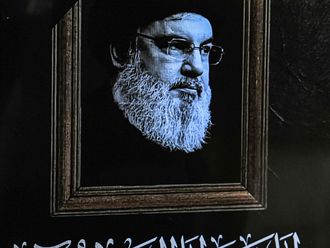Goma: On muddy grounds at the foot of an active volcano, tarpaulin shelters cluster like mushrooms at a makeshift camp where thousands of Congolese driven from their homes by conflict find themselves in an all too familiar situation.
“I was already here in 2008,” said 55-year-old Mburano about the Kanyarucinya camp 10 kilometres from Goma, capital of the unstable North Kivu province that has seen heavy fighting between government forces and the M23 rebels since May.
The camp is just 17 miles from a frontline that has plunged the eastern Democratic Republic of Congo into yet another humanitarian crisis. “It’s the third time I’ve been displaced by rebellion,” he said, referring to earlier revolts by the National Congress for the Defence of the People (CNDP) and the Congolese Rally for Democracy (RCD) in the country’s same eastern region.
“That’s life. We’re forced to live through this, but our wish is to return home,” he added.
Mburano is one of the camp’s 55,000 residents, most of whom are women and children, who have come over in waves since July to escape a conflict that has forced more than 300,000 people to leave their homes or take refuge in neighbouring Rwanda and Uganda.
The residents are no strangers to the volatile region’s chronic unrest, which sees old rebellions crop up under new names and a myriad militia and proxies vying for mining concessions.
Many of today’s M23 rebels, for instance, are former members of the CNDP rebel movement who were integrated into the army in 2009 after a peace deal. It is this deal that the M23 claimed Kinshasa failed to respect when the group mutinied in April.
Amid this cycle of conflict, the Congolese find themselves in a revolving door of refugee life, in which they return home from camps only to have to flee again years later. According to Jerome Merlin from the UN refugee agency, a contingent of displaced individuals had already taken up at Kanyarucinya during the CNDP’s 2008-2009 rebellion.
Joblessness
With the wet season starting up, the camp is now at the mercy of pouring rain, which seeps through the tarpaulin roofs and pools in large puddles on the ground, increasing the risk of disease. The water is where the camp’s children play to pass the time.
“Here, we live like parasites, we have nothing to do. We’re jobless,” said 22-year-old Elias, voicing a common worry at the camp.
When they fled to the camp, the residents abandoned their fields and livestock. Many were urgently in need of food upon arrival — and still are — according to the UN’s World Food Programme (WFP), which issued a call for additional funding last month.
The NGOs and UN agencies in the region are looking at improving the camp’s conditions, but Merlin, the UN worker, casts doubt on the feasibility of an upgrade. “It’s not good to have a camp this big, and conditions like access to water and security are not met,” he said.
While awaiting a decision, the camp’s residents worry that the M23 rebels will follow through on their threat earlier this month to seize Goma.
The UN mission in DR Congo, known by the acronym MONUSCO, issued an assurance that the city was well secured, but some of the residents remain concerned.












